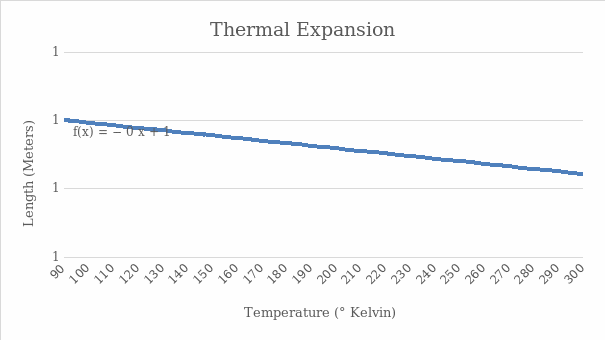Lab Report
This laboratory exercise used thermal expansion to identify a material. In most cases, solids expand after heating due to the faster vibration of atoms about their fixed points. However, some solids, particularly polymers, experience contraction when exposed to heat. The main cause of negative thermal expansion is the transverse vibrational motion of the atoms in the material. The coefficient of thermal expansion can be used to identify the specific material exposed to heat.
Materials and Methods
A one-meter bar of unidentified material was heated from 90 to 300° Kelvin using a gas flame. The length of the material was measured in intervals of 5° Kelvin using a meter gauge. The results were recorded in MS Excel for further analysis.
Results
The results showed a clear negative relationship between the temperature and length of the material. Figure 1 shows the trend of linear change for the material.

The resulting model showed that a unit increase in temperature resulted in a 0.00002 decline in length. Therefore, the material’s length had a negative thermal expansion coefficient.
Discussion
The material had a negative thermal expansion coefficient of -0.0002, or 0.002%, which indicates that the transverse vibrational motion of atoms that make up the material shorten the material. These transverse forces overcome the longitudinal vibrations that lengthen the bonds (Attfield, 2018). As the temperature rises, the transverse forces increase, which contracts the material. This interplay of transverse and longitudinal motions results in a “guitar string” effect. This effect arises when the transverse phonon amplitudes arising from torsional motion exceed the expansion force of the longitudinal modes, thereby reducing the overall length of the material. Such behavior is most evident in polymers that exhibit the guitar string effect when heated.
Reference
Attfield, J.P. (2018). Mechanisms and materials for NTE. Frontiers in Chemistry, 6(371), 1-6.